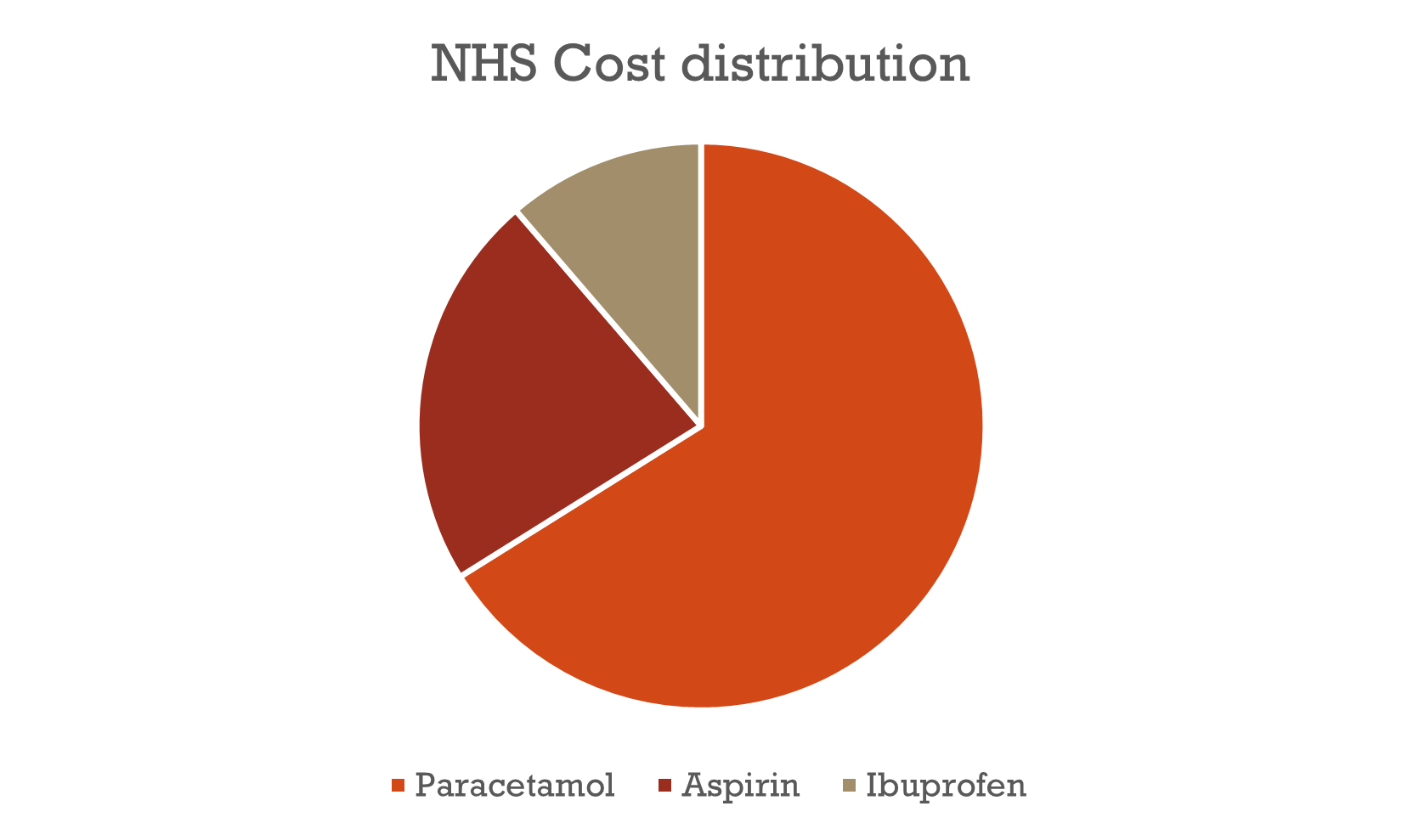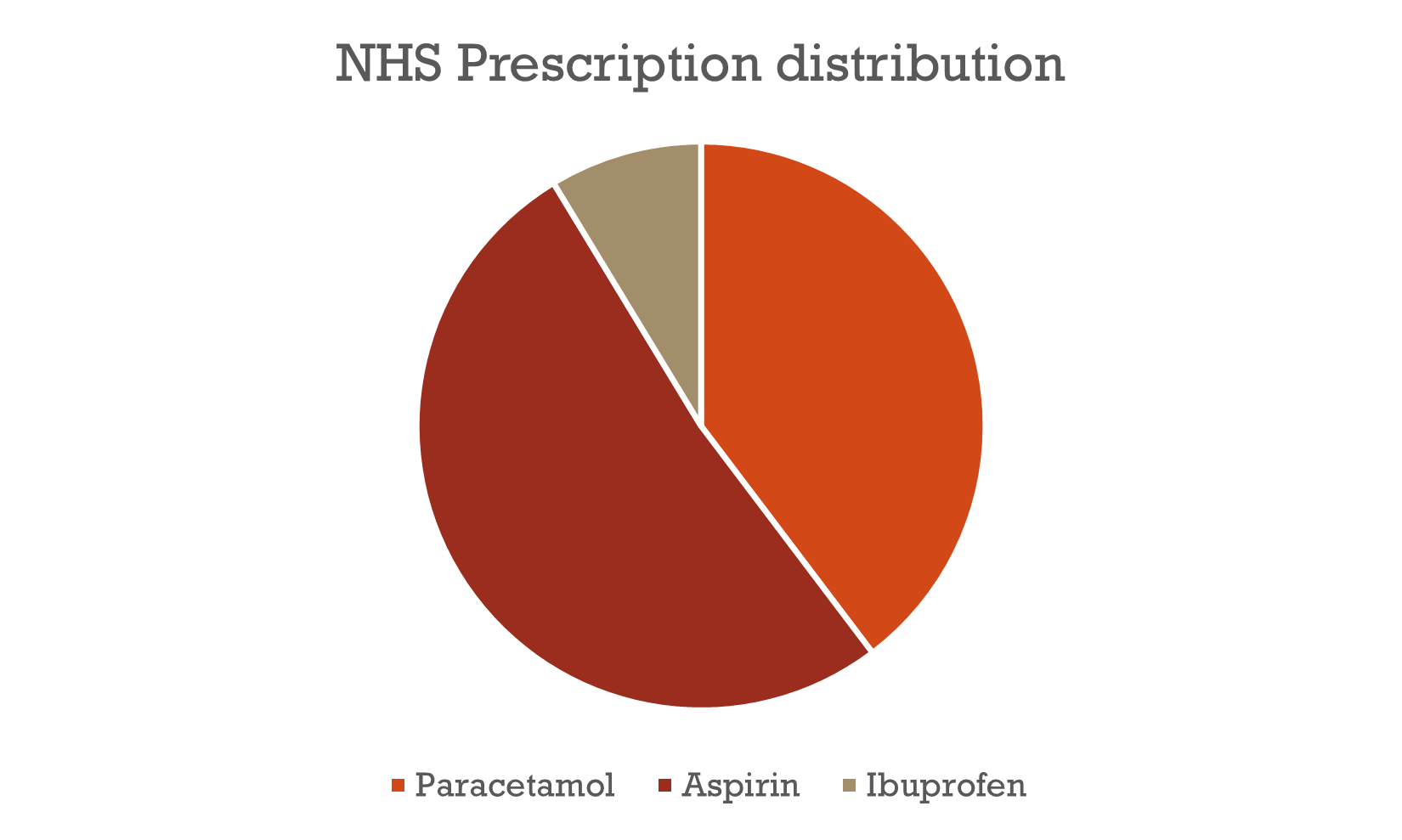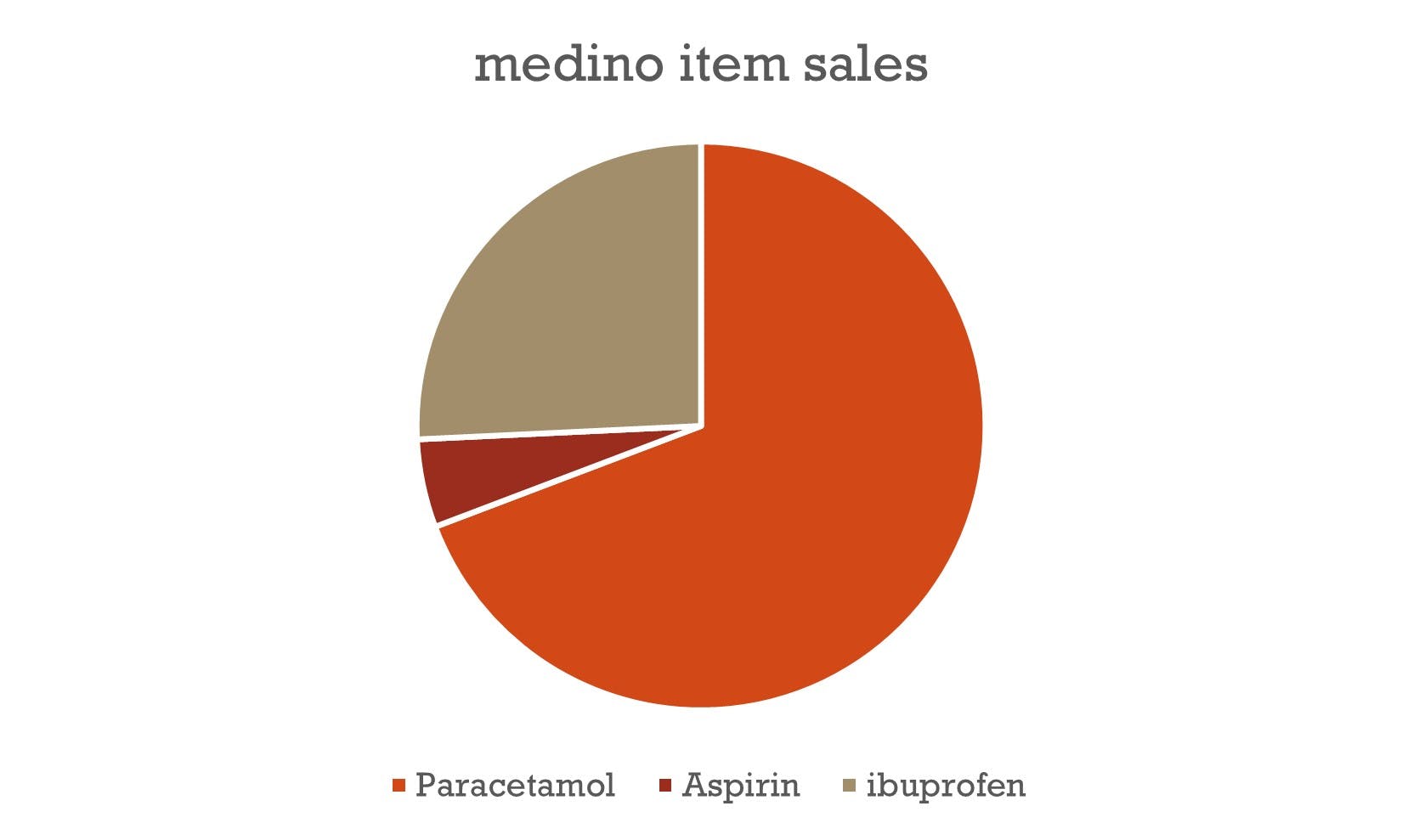Paracetamol in Perspective: Usage, Trends, and Insights for 2023
Reviewed and fact-checked by Alessandro Grenci, Superintendent Pharmacist. Read our editorial policy to see how we create informative, accurate content.
Paracetamol is one of the most commonly used medications for treating fever, aches, and pain. And for good reasons, it has proven over time to be reliable and dependable in short-term symptomatic treatments. In this article, we will give you the numbers, the stats, and the facts about everything you want to know and did not know you wanted to know about this medication. Let's dive in!
As of 2023, Paracetamol remains a popular choice for managing mild to moderate pain, such as headaches, toothaches, and sprains, as well as fevers caused by illnesses like colds and flu. Paracetamol is often recommended as one of the first treatments for pain, as it is safe for most people to take, and side effects are rare. It is available both over-the-counter and on prescription, making it accessible for a variety of acute and chronic painful conditions. The medication is available both in branded form such as Panadol or Hedex as well as generic form such as Numark or Accord.

Global sales of paracetamol
In 2021, the global paracetamol market size was valued at USD 1.56 billion and is expected to grow at a compounded annual growth of 4.4% from 2022 to 2029, reaching nearly USD 2.20 billion. The global analgesics market, which includes paracetamol, reached USD 30.93 billion in 2022 and is projected to grow at an annual rate of around 6%, reaching USD 42.65 billion in 2027.
Dispensed prescriptions containing paracetamol
In 2021, the NHS in England spent approximately £73.7 million on paracetamol prescriptions, with over 16 million prescriptions written. This figure has increased compared to previous years, such as in 2016-2017, when the NHS spent £70 million on paracetamol prescriptions in England, with 21 million items dispensed.
Paracetamol, where do we store it?
An internet survey conducted in the UK found that the most common place in which individuals stored paracetamol was the kitchen (37.8%), followed by the bedroom (24.3%) and bathroom cabinet (16.2%).
UK paracetamol usage
In the UK, an estimated 6,300 tonnes of paracetamol are sold annually, which equates to about 35 grams or 70 paracetamol (500mg) tablets per person each year. This may sound fairly high but it is important to remember that the recommended dose is 500mg tablets at a time, up to four times in 24 hours. So, for example, someone battling a fever can take up to 8 tablets within the 24h period.
Usage increases with age
Paracetamol usage varies across different age groups. In a study conducted in France, the use of paracetamol increased with age, from about 16 defined daily doses (DDD) per year in 15-30-year-olds to over 90 DDD per year in patients above the age of 75.
The go-to medication for newborns
It is known that by the age of 6 months, up to 84% of children in the UK will have received paracetamol. Paracetamol is more commonly used during the early months because ibuprofen is not recommended until the baby turns 3 months. It is generally recommended by GPs to help combat the symptoms of fever in infants.

Adherence to regulation
A study found that 58% of retailers sold more than the MHRA guidelines recommended for paracetamol. The legislation introduced in 1998 was intended to protect patients and lower the amount of pills sold at any one time, however, this seems to not have had the desired effect. This does explain why you may need to fill out a form when shopping with us at medino, in case you go over the limit, we just need to ask some questions to ensure it is sent to you for the right purposes.
Overdosing
Paracetamol overdose is a serious issue in the UK, with an estimated 82,000 to 90,000 patients presenting with paracetamol overdose each year. A study found that paracetamol poisoning most frequently occurred in the age group of 15-24 years. It is important to note that while paracetamol overdose is more common in the 15-24 age group, the risk of fulminant hepatic failure (FHF) and mortality following paracetamol overdose is higher in patients aged 40 years or above.
Overdose definitions
A staggered overdose involves excessive amounts of paracetamol ingested over a period longer than 1 hour, also typically in the context of self-harm. Therapeutic excess occurs when excessive paracetamol is taken with the intent to treat pain or fever without self-harm intent. In adults, an acute ingestion of more than 150 mg/kg or 12 g of paracetamol is considered a toxic dose and poses a high risk of liver damage.
Paracetamol poisoning
48% of poisoning cases in hospitals are from paracetamol. In general, most cases are due to extended use over a longer period of time.
Overdosing fatalities
Between 150 and 250 deaths occur annually, mostly in patients who present late, after a staggered overdose or unintentional therapeutic excess. In 2021, there were 227 deaths recorded in England and Wales as a result of paracetamol poisoning.
Reasons for taking paracetamol
Paracetamol is a commonly prescribed medication for mild to moderate pain and fever reduction. It is often recommended as one of the first treatments for pain, as it is safe for most people to take and side effects are rare. Common ailments for which paracetamol is prescribed include:
- Headaches
- Toothache
- Sprains
- Fevers caused by illnesses such as colds and flu
- Backaches
- Menstrual period pain
- Osteoarthritis pain
- Muscle strains
- Period pain
- Aches and pains due to colds and flu
Paracetamol vs Ibuprofen vs aspirin popularity NHS
When we talk about nonsteroidal anti-inflammatory drugs, NSAID, the most commonly mentioned ones tend to be paracetamol, ibuprofen, and aspirin. Let's look at the prescribing numbers with the NHS to see which is most popular. These are from 2022.
- Paracetamol: 16 million prescriptions, cost £73.7m
- Aspirin: 20.8 million prescriptions, cost £25.2m
- Ibuprofen: 3.5 million prescriptions, cost £12.6m


Paracetmol vs Ibuprofen vs aspirin popularity medino
What do medino’s customers shop out of the three? Here is the distribution, based on the last three months as of September 2023. The actual percentage of units sold is as follows:
- Paracetamol 69%
- Aspirin 5%
- Ibuprofen 26%.

To understand why medino’s statistics differ from NHS, we asked our Superintendent pharmacist to shed some light, Alessandro Grenci:
In general, GPs don’t prescribe Ibuprofen and Paracetamol for minor aches/pains or fever. However, because Aspirin often is used with another purpose than pain relief, that is blood thinning to prevent clots and stroke, it is prescribed at a much higher rate. This is reflective in the high amount of NHS prescriptions in comparison with Medino's sales.
FAQ on Paracetamol Usage
To conclude we sat down with our superintendent pharmacist, Alessandro Grenci, to discuss some of the most common questions surrounding paracetamol usage:
What is paracetamol used for?
Paracetamol is a medicine used for mild to moderate pain relief and fever reduction. It is commonly used to treat headaches, muscle/joint pains, backaches, toothaches, and colds.
How does paracetamol work?
Paracetamol works by blocking "chemical messengers" in the brain that signal pain. It also reduces high temperature by affecting the chemical messengers in an area of the brain that regulates body temperature.
How much paracetamol can I take?
Adults can usually take 1 or 2 tablets (500mg) every 4-6 hours, but should not take more than 4g (8 x 500mg tablets) in 24 hours.
Can I take paracetamol with other painkillers?
You can safely take paracetamol with other painkillers if your doctor prescribes it. However, do not consume it with other paracetamol-containing products like co-codamol, co-dydramol, or Tramacet, as these medications already contain paracetamol.
Is long-term paracetamol use safe?
Long-term paracetamol use could increase the risk of heart disease and strokes in people with high blood pressure. It can also cause tiredness, breathlessness, blue fingers and lips, anemia, liver and kidney damage.
Is paracetamol safe during pregnancy?
Currently, moderate use of paracetamol during pregnancy, under medical supervision, is considered safe.
Does paracetamol interact with alcohol?
Drinking a small amount of alcohol while taking paracetamol is usually safe. However, it is recommended to keep alcohol consumption within the guidelines of no more than 14 units of alcohol a week.
Can I take paracetamol if I have liver or kidney problems?
If you have liver or kidney problems, consult your doctor or pharmacist before taking paracetamol.
Is paracetamol effective for all types of pain?
Paracetamol is effective for mild to moderate pain, but some studies suggest that it might not be better than a placebo for certain types of pain.
Sources:
BMJ Best Practice - Paracetamol overdose in adults
Medscape - Acetaminophen Toxicity
National Library of Medicine - Age and paracetamol self-poisoning
National Library of Medicine - Usage patterns of paracetamol in France
Oxford Academic - Internet survey of home storage of paracetamol by individuals in the UK
University of Oxford- What’s the point of paracetamol?

